|

|
With this enthusiast class motherboard from MSI, the maker has dedicated 32 lanes from the 890FX total available PCI Express 2.0 bandwidth for videocards, spreading it over four PCI Express 2.0 x16 slots.
80% Rating: 
|
|
|
|
Home >
Reviews >
Motherboards >
MSI 890FXA-GD70 |
|
|
Motherboard Highlights Photo Gallery
Starting off with the PCI Express expansion slots...
|
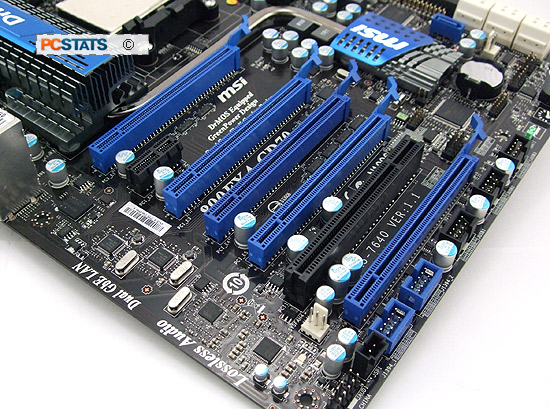
There are four
blue PCI Express x16 slots that can be run in (x16/x16/x0/x0) mode or
(x8/x8/x8/x8) modes. The blue PCI Express x16 slot in the middle always
runs in (x4) mode. There's also a black PCI Express x1 slot and a legacy
PCI slot. |
|
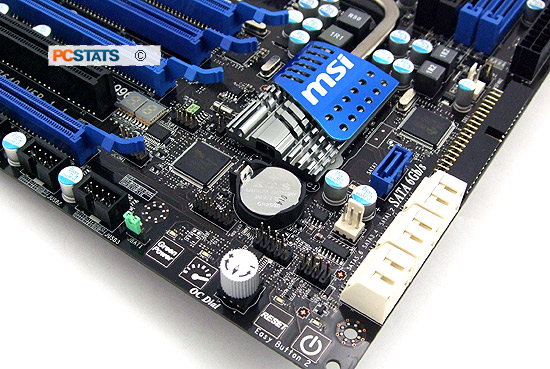
Six SATA 6Gb/s (RAID 0,1,5,10)
ports are natively supported by the AMD SB850 chipset, along with one blue
SATA 3Gb/s port powered by a JMicron JMB363 chip, which also powers the
IDE port and one eSATA port at the I/O panel. Notice the Port 80 card
tucked away between the videocard slots.
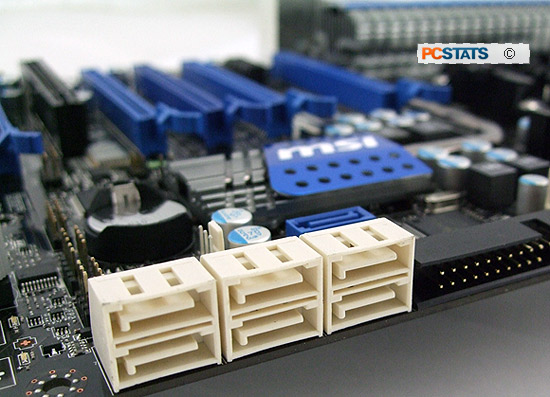 |
|
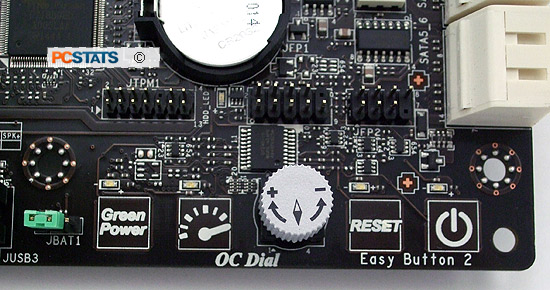
From left to right: The Green
Power button turns off the LED lights on the motherboard, the OC gear
button activates the OC Dia (middle)l, which in turn adjusts the system
bus speed. To the right are the reset and power buttons, which do what
you'd expect.
|
|

MSI's 890FXA-GD70
motherboard supports up to 16GB of DDR3 1066/1333MHz memory in four DIMMs,
or 4GB for 32-bit operating systems. Memory can be overclocked to 1600MHz
if the memory will tolerate it. Notice that the DDR3 memory only locks
into place on one side
, making it easier to install and remove memory without
removing videocards.
|
|
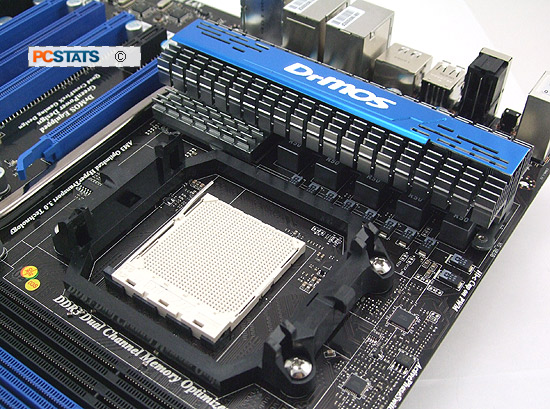
AMD Socket AM3 motherboards support newer 45nm
chips like the Phenom II X6 as well as Athlon II and Sempron processors.
System bus is 5200MT/s, Hypertransport 3.
|
|

The AMD 890FX chipset is cooled
by a long, low passive cooler. This design has low enough clearance that
it shouldn't conflict with standard socket AM3
CPU coolers. Along the left edge you can see the mil-spec grade High-C
Tantalum capacitors MSI selected for the CPU VRM.
|
|

Underneath the secondary passive
heatsink labeled "MSI" is the AMD SB850 southbridge controller, which
powers the SATA 6GB/s ports and five of the USB 2.0 ports on the I/O
panel.
|
|

The NEC D720200F1 controller
powers the two USB 3.0 ports on the 890FXA-GD70's I/O panel. Two PCI
Express lanes are dedicated to USB 3.0 bandwidth.
|
|
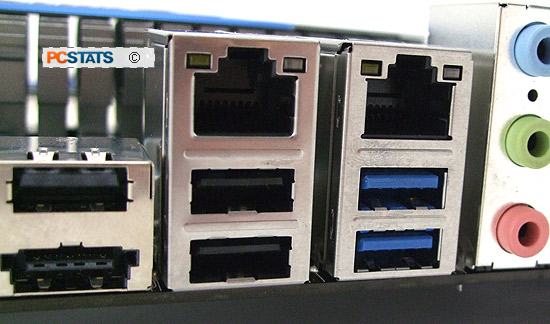
The USB 3.0 ports on the MSI
890FXA-GD70 are marked in blue, and are capable of 4.8Gb/s transfer
speeds, or roughly 10x the speed of USB 2.0.
|
External hard drives need power supplies, but USB 3.0
external hard drive docks can draw sufficient juice over the USB 3.0 connection.
By 2011 you'll wish this board had six USB 3.0 ports! In any case, the USB
3.0 controller communicates with the AMD 890FX chipset over
dedicated PCI Express 2.0 lanes, meaning that the extra bandwidth of USB 3.0
won't get bottlenecked by other system components
|
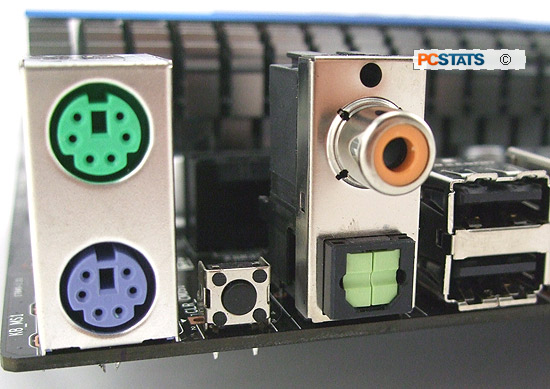
Beside the legacy PS/2 ports is a
hardware clear CMOS button, a handy feature for overclockers and a much
more convenient way of resetting the CMOS configuration than removing the
CMOS battery.
|
Next up a look inside the MSI 890FXA-GD70 BIOS and then we're off to the
overclocking races!
|
|
|
|
